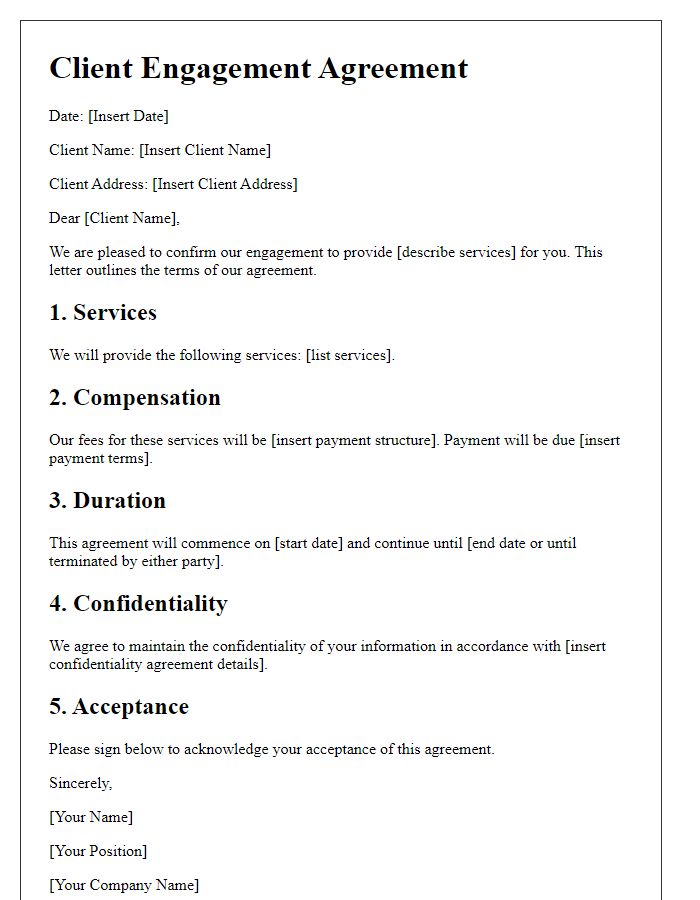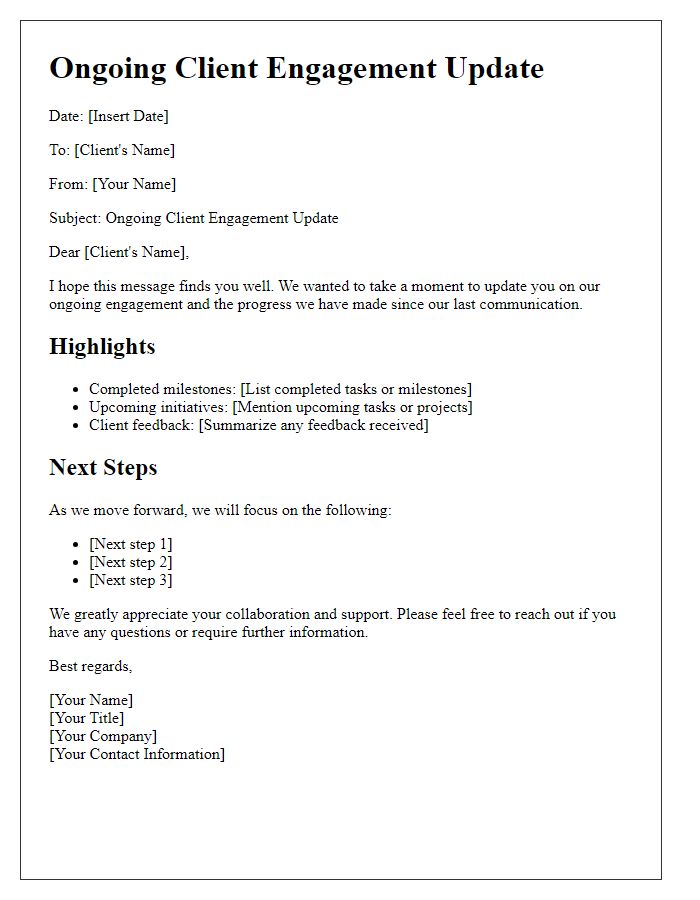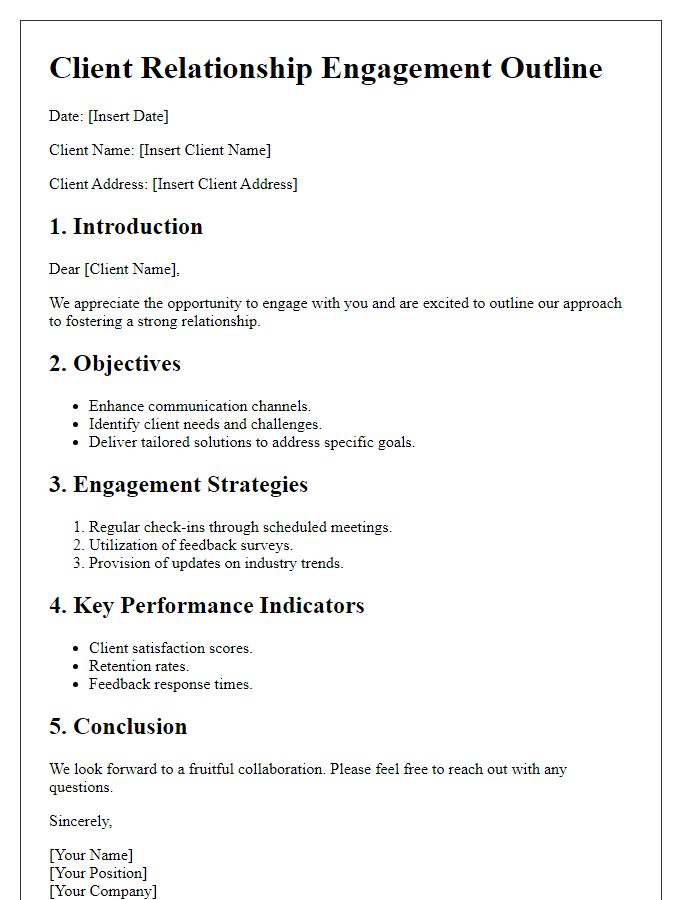Are you ready to enhance your client relationships and set the foundation for successful collaborations? Crafting a well-structured client engagement letter is crucial in establishing clear expectations and creating trust right from the start. By outlining the scope of services and mutual responsibilities, you can ensure that both you and your client are aligned and on the same page. So, let's dive deeper into the key components of a compelling engagement letter that will pave the way for lasting partnerships!

Client Information
Client engagement letters serve as formal agreements outlining the scope and expectations of a service relationship between professionals and their clients. These letters typically include essential client information, such as the client's full name, business title (if applicable), and contact details, including a valid email address and phone number. Additionally, the letter should specify the type of services to be provided, such as financial consulting, legal advice, or marketing strategies, along with relevant timelines for project initiation and completion. Other critical elements might include payment terms, confidentiality clauses, and any applicable terms and conditions, ensuring both parties have a clear understanding of their obligations and responsibilities. Such documents are vital for establishing trust and professionalism in client interactions.
Scope of Services
The scope of services in a client engagement letter outlines the specific tasks and responsibilities agreed upon between the service provider and the client. It includes essential details, such as the nature of services to be provided (for example, accounting, consulting, or tax preparation) tailored to the client's needs. Clear timelines may be established for milestones or deliverables, ensuring transparency and accountability. Additionally, any relevant legal or compliance requirements linked to the services should be explicitly mentioned to provide a comprehensive understanding. Fees associated with the services, payment schedules, and terms can be specified for clarity. This document serves as a critical reference point throughout the engagement, fostering a mutual understanding and smooth collaboration between the parties involved.
Fee Structure and Payment Terms
Client engagement letters typically outline essential details regarding the professional relationship, including fee structures and payment terms. Professional services, such as legal or consulting, often include fixed, hourly, or retainer fees. Clear communication of payment schedules, including deposit requirements, billing frequency, and accepted payment methods (credit cards, wire transfers), is critical. Additionally, it is important to specify late payment penalties, potential service interruptions due to non-payment, and conditions for terminating the engagement. Ensuring mutual understanding of the fee structure helps maintain a positive professional relationship and sets clear expectations from the outset.
Confidentiality Agreement
The Confidentiality Agreement establishes a secure framework for the exchange of sensitive information between parties. This document outlines the responsibilities of both the Disclosing Party, who shares proprietary knowledge or trade secrets, and the Receiving Party, who commits to safeguarding this information. Key elements include the definition of confidential information, intended use, duration of confidentiality (often ranging from two to five years), and potential exclusions such as information already in the public domain or independently developed knowledge. Additionally, consequences for breach of contract, which may involve legal remedies or financial penalties, are clearly stated. The agreement typically culminates in signatures from authorized representatives, thereby ensuring legal enforceability and mutual trust in business transactions or collaborative projects.
Terms and Conditions
A client engagement letter outlines the essential terms and conditions governing the professional relationship between a service provider and a client. This letter typically includes details about the scope of services provided, which may range from consulting, legal advice, to financial planning. It clearly specifies the fees involved, including hourly rates, flat fees, or project-based pricing structures, ensuring transparency. Important deadlines, whether for project milestones or payment terms, are also addressed, providing clarity on expectations. Confidentiality clauses protect sensitive client information, aligning with industry standards such as the General Data Protection Regulation (GDPR). The letter often highlights dispute resolution procedures, offering methods such as mediation or arbitration to resolve potential conflicts amicably. Lastly, it encompasses termination conditions, outlining the process for a client or service provider to end the engagement under specified circumstances.













Comments